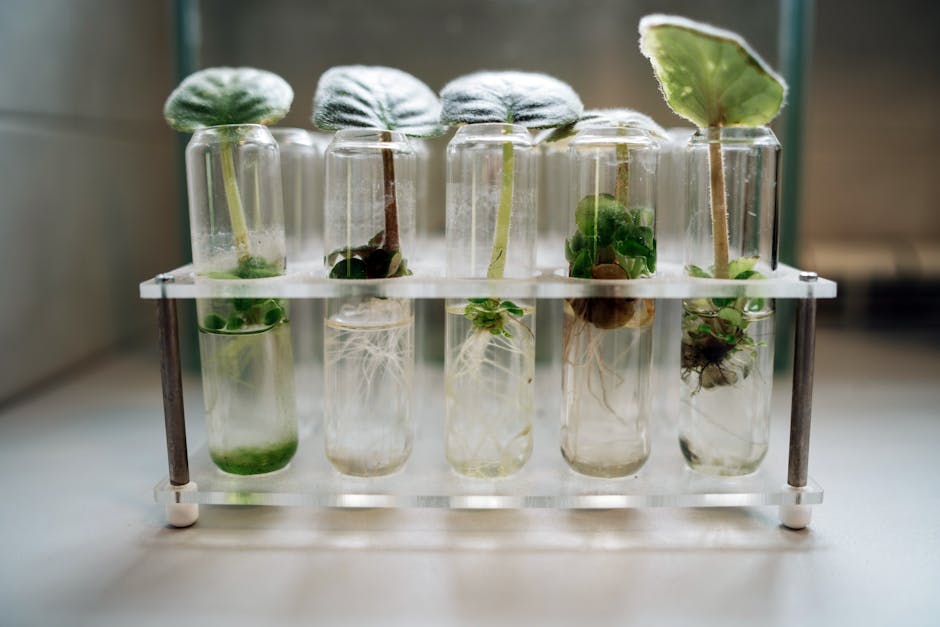Understanding the Basics of Plant Growth
Understanding the Basics of Plant Growth
Blog Article

Optimizing plant growth is essential for both home gardeners and commercial growers. It enhances not only the health and vitality of plants but also their yield and resilience against diseases. Understanding how to foster the best conditions for plants to thrive can result in lush gardens and productive farms. This article will explore the foundational principles of plant growth, effective techniques for enhancing growth, and the tools and technologies that support these efforts.
Understanding the Basics of Plant Growth
To effectively optimize plant growth, it is crucial to understand the fundamental principles that govern how plants develop. There are several key factors to consider:
Light
Light is a primary source of energy for plants, enabling photosynthesis, the process by which plants convert sunlight into chemical energy. The intensity, duration, and quality of light can significantly affect plant growth. Different plants have varying light requirements; some thrive in full sun, while others prefer shade. Understanding the light needs of specific plants can help in arranging them appropriately and ensuring they receive adequate exposure.
Water
Water is vital for plant health, facilitating nutrient transport and maintaining cell structure. Overwatering and underwatering can both lead to stress and hinder growth. Implementing a consistent watering schedule and monitoring soil moisture levels can help ensure that plants receive the right amount of water. Drip irrigation systems can also be effective in delivering water directly to the root zone, promoting optimal growth.
Nutrients
Nutrients, including macronutrients like nitrogen, phosphorus, and potassium, and micronutrients like iron and magnesium, are essential for various physiological processes in plants. Soil testing can help determine nutrient levels and inform fertilization practices. Organic fertilizers, compost, and mulch can enrich soil health, supporting robust plant growth while minimizing the risk of nutrient runoff.
Soil Health
The quality of soil plays a crucial role in plant growth. Healthy soil is rich in organic matter and has good structure, allowing for proper drainage and aeration. Practices such as crop rotation, cover cropping, and reducing chemical inputs can enhance soil health over time. Regularly amending soil with compost or other organic materials can also improve its fertility and support plant growth optimization.
Techniques for Enhancing Plant Growth
Once the basic principles are understood, gardeners and growers can implement various techniques to further enhance plant growth:
Pruning
Pruning involves selectively removing certain parts of a plant, such as branches or leaves, to promote healthier growth. This technique can improve air circulation, reduce disease risk, and encourage the development of new shoots and flowers. Proper timing and technique are essential to avoid damaging the plant.
Fertilization
Fertilization is a key component of plant growth optimization. Applying the right type and amount of fertilizer can provide the nutrients needed for healthy plant development. Organic fertilizers, such as compost or well-rotted manure, can be highly beneficial, while synthetic fertilizers can offer immediate nutrient availability. Understanding the specific nutrient needs of plants can help in choosing the right fertilization strategy.
Pest Management
Pests can significantly hinder plant growth. Implementing integrated pest management (IPM) strategies can help mitigate pest problems while promoting a healthy ecosystem. This approach includes monitoring for pests, introducing beneficial insects, and using organic pesticides when necessary. Maintaining plant health through proper care and nutrition can also make plants more resilient to pest attacks.
Tools and Technologies for Plant Growth Optimization
In recent years, various tools and technologies have emerged to assist in optimizing plant growth. Hydroponics, for instance, allows plants to grow in nutrient-rich water instead of soil, offering precise control over nutrient delivery and environmental conditions. This method can lead to faster growth rates and higher yields.
Additionally, smart gardening devices, such as soil moisture sensors and automated irrigation systems, can help monitor and adjust growing conditions efficiently. These tools provide gardeners and growers with the data needed to make informed decisions, ultimately enhancing plant health and productivity.
In conclusion, optimizing plant growth is a multifaceted endeavor that requires a deep understanding of the basic principles of plant biology, the implementation of effective growth-enhancing techniques, and the utilization of modern tools and technologies. By focusing on these aspects, both home gardeners and commercial growers can achieve thriving plants and bountiful harvests. For those looking to delve deeper into plant growth optimization techniques, [exploring specialized products and resources](https://www.youngplant.cn/products-49564) can provide valuable insights and tools tailored to specific needs.
Report this page